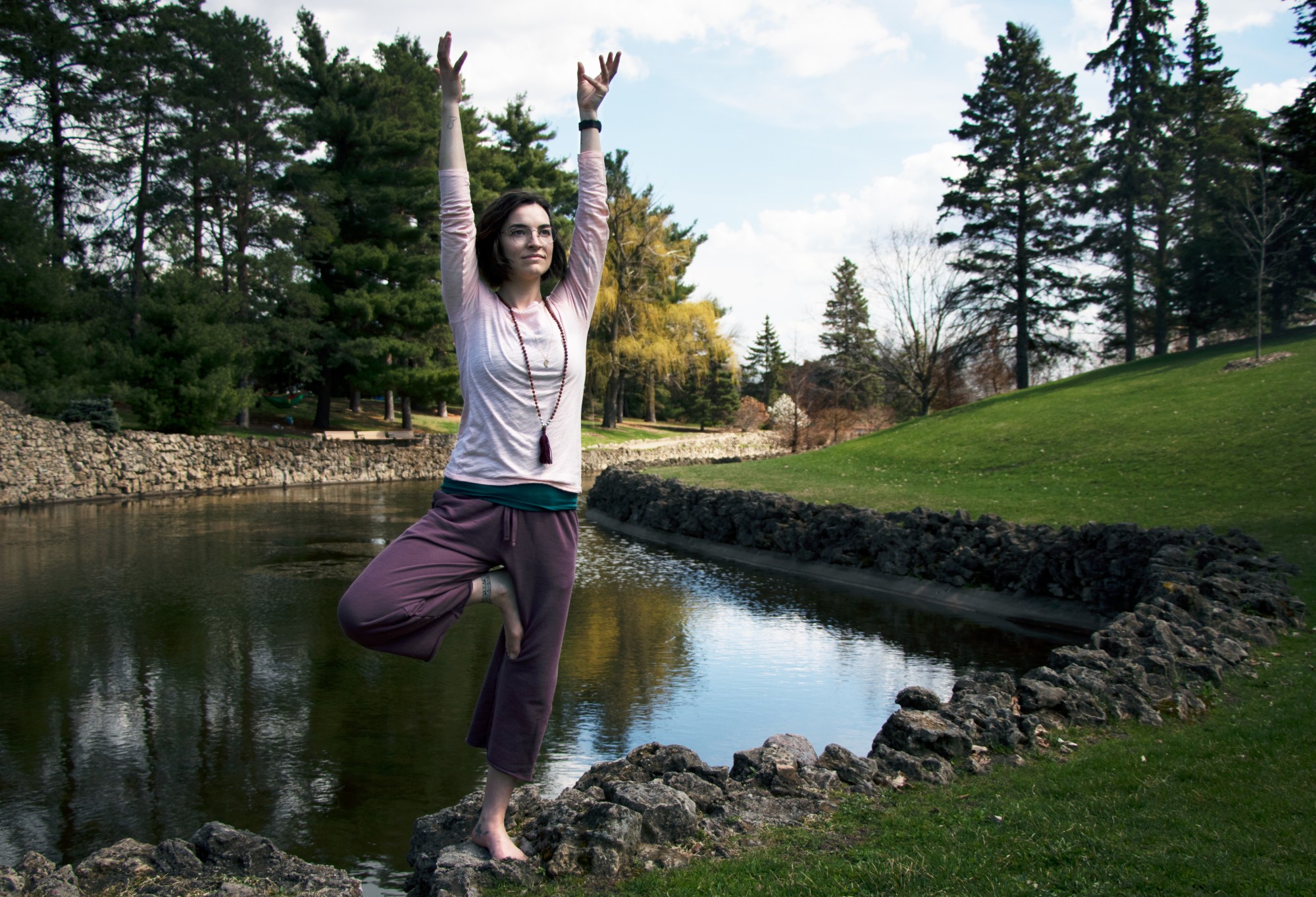“Health” and “wellness” are becoming bigger buzzwords as COVID-19 continues. With finals week approaching and summer practically within our reach, though, we have an opportunity to focus on ourselves a little more these days.
Part of that reflecting might include yoga or meditation, among other things. Of course, this is not new advice — it just might be difficult finding a routine that works for you.
Tessa Jonson, a private yoga instructor in Minneapolis and a University of Minnesota alum, helps people face inward and reflect on their stress and anxiety. While everyday life might be getting too overwhelming, she says there can still be room for gratitude.
A&E spoke with Jonson to get her best tips on stress and anxiety management and how to build a yoga routine that you’ll actually stick to.
How did you get started with your yoga practice?
I studied graphic design and moved away from that and entered my yoga journey maybe eight years ago. It was actually via YouTube. I was living abroad and had left a job that wasn’t working and just came to yoga. It was always on my radar, but it wasn’t really something I was interested in for various reasons. I just thought I wouldn’t be good at it. I’m a perfectionist so knowing that I’d be bad at it was a thing I wasn’t ready to confront, which I think is a lot of people’s hang-ups about yoga.

I just had some free time on my hands, and a 30-day yoga challenge popped up somewhere and I found myself doing it. As soon as the first practice ended I just started looking for more. Once I developed my asana, the physical stretching practice, I realized there was more to it and I kept diving deeper.
What tips do you have for making mindfulness part of your routine?
First, I think finding a style that works for you is so important. There are so many different aspects of yoga, like maybe the stretching doesn’t appeal to you, but maybe you’re interested in breathwork. Or maybe it’s more of the meditative aspects that appeals to you. There’s infinitely different perspectives. You could find something that’s really restorative and nourishing to the nervous system, or you can find something that’s really active and more stimulating if you need to move some energy or you feel a little stagnant. I think it helps to respond to where you’re at that day.
Getting the routine down is pretty challenging. Having a nonnegotiable start time is really helpful. I do find that in the morning it’s easier just because you come up with more excuses and more things to do later on. It doesn’t have to be like an hour. Maybe you have a daily minimum of 15 or 20 minutes — something that is definitely achievable — that you can set yourself up for success so that you don’t beat yourself up about not being able to do it [that day].
How do yoga and mindfulness intertwine with stress and anxiety in your teaching?
I think one of the biggest proponents of yoga for stress and anxiety management is the mindfulness aspect — interrupting your thought pattern in a way that’s helpful. You’re paying attention to your body and your breath rather than your worries and your stresses. It changes the energy of where your thoughts are going. You’re no longer thinking about the things that are really stressful in your life. Instead, you’re thinking about, ‘How can I slow down my breathing? How does this feel in my hip? Where is this changing in my stature?’ It’s giving you something new to think about.
A few techniques I use a lot are pranayama and yoga nidra, which is sort of a guided meditation. The pranayama is really helpful for assessing anxiety. It’s, again, just changing your thought patterns and giving you something to tether your mind to. I do a lot of square breathing, so breathing in for four seconds, holding it for four seconds, breathing out for four seconds, and holding that for four seconds. If we can elongate the exhales that will help stimulate the parasympathetic nervous system. That really helps to calm down the mind and just put you in a state that’s much more tranquil. For yoga poses, forward folds are really beneficial for the nervous system.
What if someone gets in their head and thinks they can’t go to a practice or they’re not good at it?
One thing that I just love to say is it doesn’t matter what it looks like, it matters what it feels like. It’s going to look different for every body, and that’s depending on flexibility and bone structure, and just so many facets. It can be kind of off-putting to see a skinny girl doing these insane acrobatics. It’s not helpful when you’re just nowhere near that. So, know that you’re doing the pose if you’re feeling the pose. It doesn’t matter that you’re not able to touch the ground or even touch your knees. What matters is that you’re feeling your hamstring stretch. You do need to be consistent about it then, too.
Modifications are great, too, so having blocks or a blanket or some books. But again, continue the practice and I think just doing the best you can knowing that if you’re feeling it, you’re doing it.
Editor’s note: This interview has been lightly edited for length and clarity.









